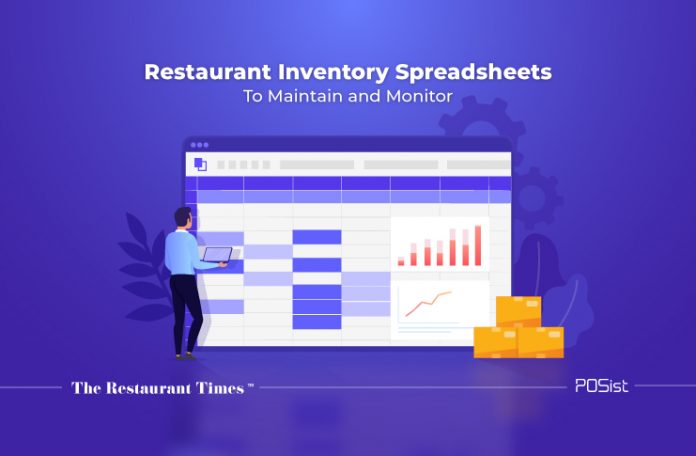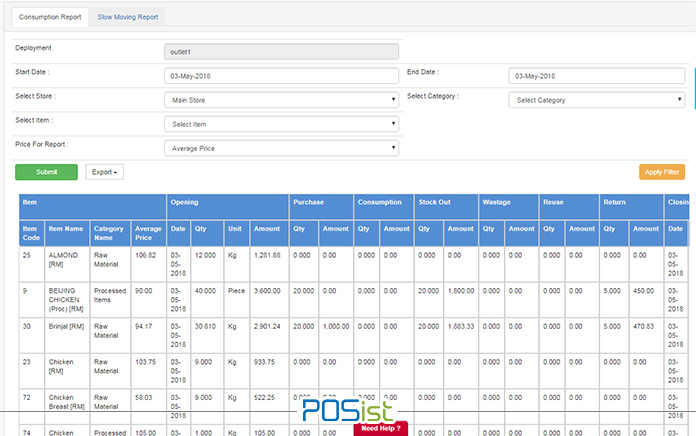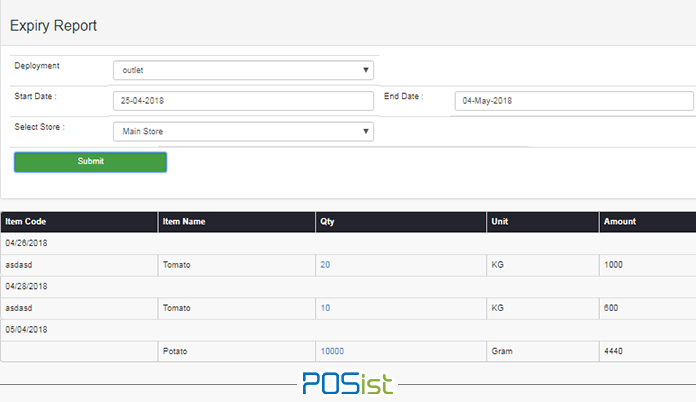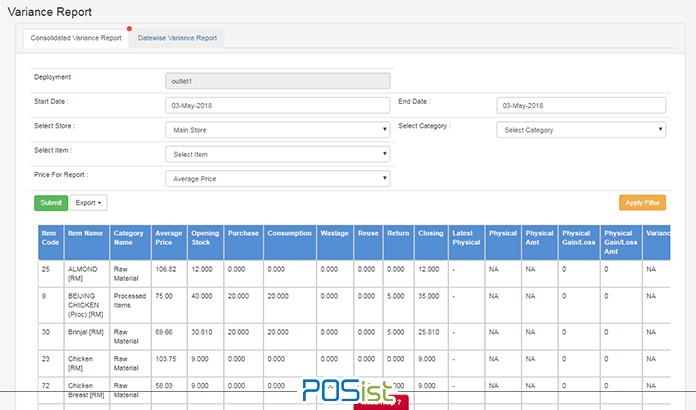One of the most critical expenses that restaurants in Singapore incur on a daily basis is the cost of food. According to a study, a typical restaurant in Singapore spends almost 31.8% of its total operating budget on purchasing goods and raw materials. Restaurant inventory is readily prone to contamination, theft, and pilferage which adds to the overall costs. Therefore, it is essential to keep a keen eye on the inventory to ensure that there is no wastage or unnecessary expenses. Keeping track of the inventory manually is not advisable, considering the intricacies and vastness of supply chain processes. The best solution is to invest in robust restaurant management software that comes equipped with detailed inventory reports. In this article, we will discuss the restaurant inventory spreadsheets that restaurateurs in Singapore must maintain and monitor.
Essential Restaurant Inventory Spreadsheets That Restaurant Operators In Singapore Must Maintain And Track
Restaurant inventory management software is equipped with detailed reporting features and provides automated reports of most of the restaurant inventory data points discussed in this article. Mentioned below are some vital inventory sheets that must be looked for.
1. Consumption Report
The consumption report feature generates an itemized report of all inventory items and tracks the exact consumption of each. With consumption reports, restaurateurs can track the precise levels of stock that come in, check for wastage, monitor the quantities utilized and the price at which inventory was purchased, and analyze the reasons why inventory was returned to the base kitchen or the vendors if any.
This is how a consumption report should ideally look like.
2. Perpetual Inventory Form
The Perpetual inventory report updates the stock accounts and available inventory after each purchase or sale. It provides a highly detailed view of the changes that have occurred in the inventory levels. This feature generates an immediate reporting of the estimated inventory levels in stock and accurately reflects the actual inventory in hand.
The report identifies the most economical order quantity (EOQ) for each item in order to purchase the inventory. It is used to decide when to buy the stock, the cost to hold inventory, and analyzes the restaurant’s capacity to order stock.
3. Recipe Costing Card
A recipe costing card helps to cut down your daily costs associated with recipe costing. Include the recipes for all your dishes along with the recipe for alcoholic beverages in the recipe costing card. The cards should ideally consist of the recipe detail related to each item, such as exact ingredients, the quantity of each item, and even the items used for garnishing.
The form also provides purchase costs of each item, portion size and cost, the selling price, and the food cost percentage. Create these cards and give training to your staff on how to use them. Doing this will eliminate the instances such as unwanted food wastage and drink spillage whilst ensuring that the consistency of each item is uniformly maintained.
4. Expiry Report
Ideally, an expiry report must include the item code and name, quantity of each item, exact units, and the cost of each item. The report should also clearly mention all the details of inventory purchased, such as the date of manufacturing and the date by which stock needs to be consumed.
Robust POS systems have an automated feature that notifies restaurateurs with real-time alerts once when an item reaches its expiry date. The advantage of the expiry report is that it avoids the unwanted generation of waste and prevents the restaurant from using expired products enabling quality and better utilization of stock.
An illustration of the expiry report that will help you in keeping a tab over the expiry dates of all your inventory items.
5. Waste Sheets
Kitchen waste primarily includes dishes and beverages that have been either created with inappropriate quantities of ingredients or which have gone bad due to some unavoidable circumstances. Waste sheets should consist of details of items that have been wasted, reasons behind the wastage, and estimated wastage costs.
By maintaining a record of waste sheets and tracking them daily, you will observe a considerable reduction in the overall waste generation. It will also help the employees in following standard recipe procedures and take precautionary measures in avoiding any possible instances of waste generation.
6. Variance Report
The Variance Report compares the physical stock (actual in-hand stock) with the ideal stock (volume of the stock that should be present) and indicates the difference between the two. Integrated with the restaurant management software, this feature provides detailed information about the actual stock consumed. Variance reports alert the restaurant managers about possible excessive usage, wastage, or pilferage.
This is how a detailed variance report looks like.
By analyzing these inventory reports, restaurants in Singapore can easily identify the areas where their food costs are highest. Make smart, data-driven decisions to control excessive food costs with restaurant inventory spreadsheets and ensure smooth operations in your restaurant!




















